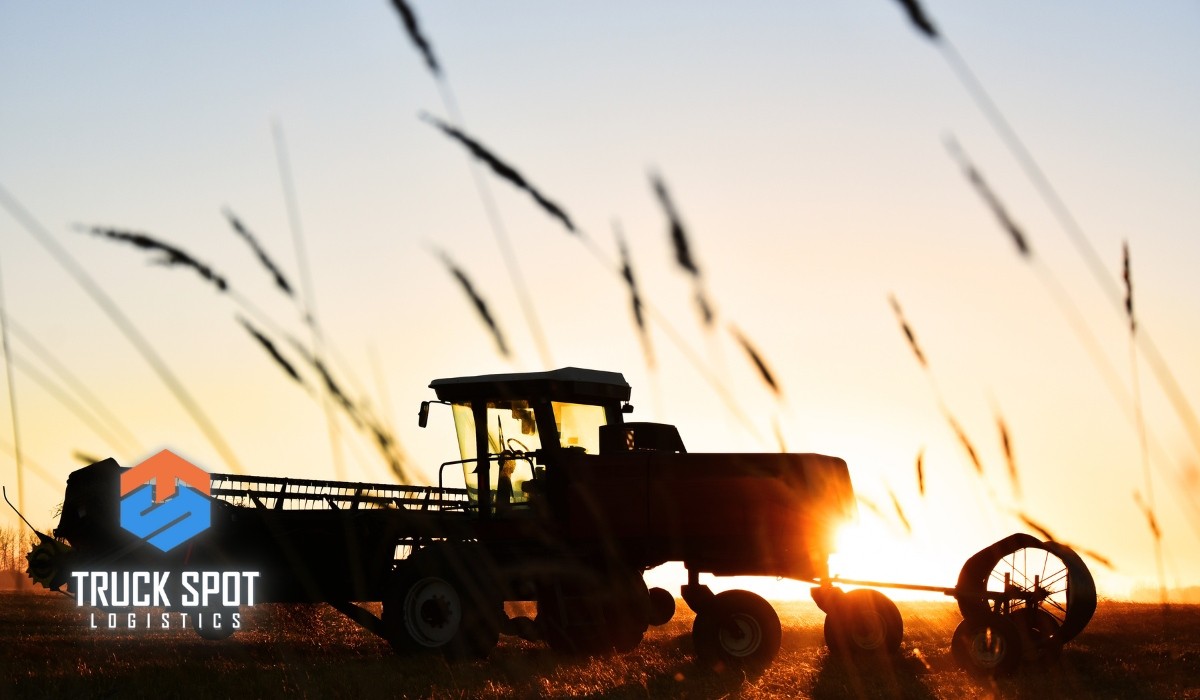When it comes to the backbone of American agriculture, farm equipment plays a pivotal role. But moving this vital machinery, be it from the bustling heartlands of Kansas to the fertile soils of California or from one farm to another, demands expertise and careful planning.
This guide is tailored for those on the lookout for insights into farm equipment transport, shedding light on the nuances of machinery hauling, helping you get the best bang for your buck and answering the main question of this guide: “How to Ship Farm Equipment?”
What is Farm Equipment Hauling?
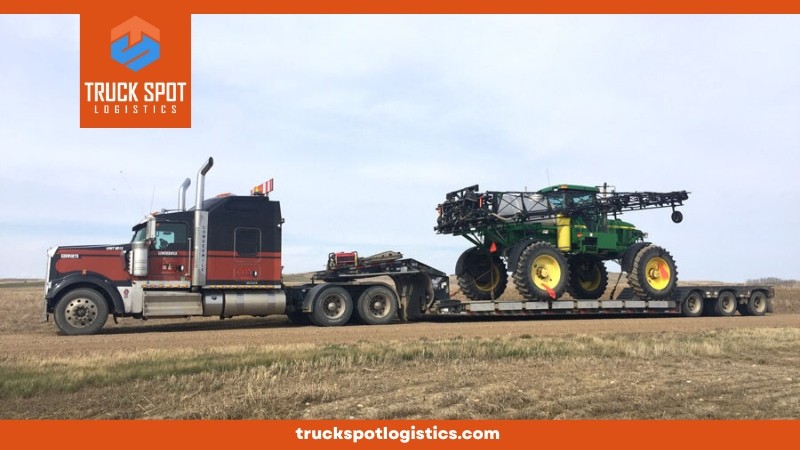
Farm equipment hauling is a specialized service focused on the transportation of agricultural machinery from one location to another. This isn’t just about moving a piece of equipment; it’s about ensuring that large, often oversized machinery—like tractors, combines, balers, and harvesters—reaches its destination safely and efficiently. Given the unique dimensions and weight specifications of these machines, farm equipment transportation demands tailored solutions, from selecting the right kind of trailer to understanding the intricacies of farm equipment shipping rates.
Whether it’s relocating machinery within a state or across the nation, hauling farm equipment is a vital component in supporting America’s agricultural backbone, making sure our farms operate without a hitch.
When dealing with the transportation process, it’s vital to underscore the significance of shipping heavy equipment the right way. Doing it incorrectly can pose risks. To effectively transfer construction, agricultural, manufacturing, and other heavy equipment types, you must be adequately prepared.
By following these tailored suggestions to prepare your heavy equipment for shipment, you not only ensure the safety of your machinery but also avoid incurring additional costs associated with hauling heavy gear.
How Transportation of Farm Equipment Works
Transporting the towering titans of the farming world is no cakewalk. These machines, essential to America’s heartland, demand special attention during transit. Wondering how the journey from a seller or manufacturer to your farm unfolds? Let’s break it down step by step.
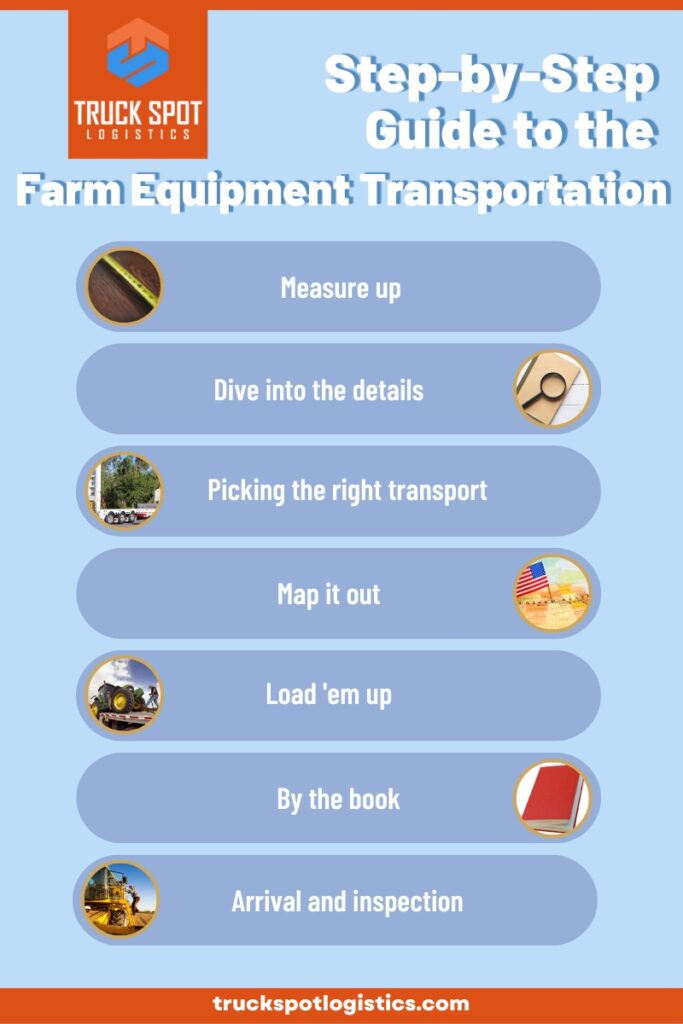
Transporting farm machinery is intricate but imperative. And while it might seem daunting, with the right guide and a reliable partner, it can be smooth sailing.
Speaking of reliable partners, TruckSpot Logistics is here to make the process even more seamless. Compare quotes and find the best heavy equipment transport solutions, ensuring your machinery’s journey is in trustworthy hands.
Deciphering Farm Equipment Shipping Rates: What to Expect
Shipping your trusty tractor or heavy-duty harvester involves more than just loading it onto a trailer and hitting the road. One of the crucial elements of farm equipment transportation is understanding the cost structure. So, what goes into determining farm equipment shipping rates, and what can you anticipate on the billing front?
Factors Affecting Shipping Rates
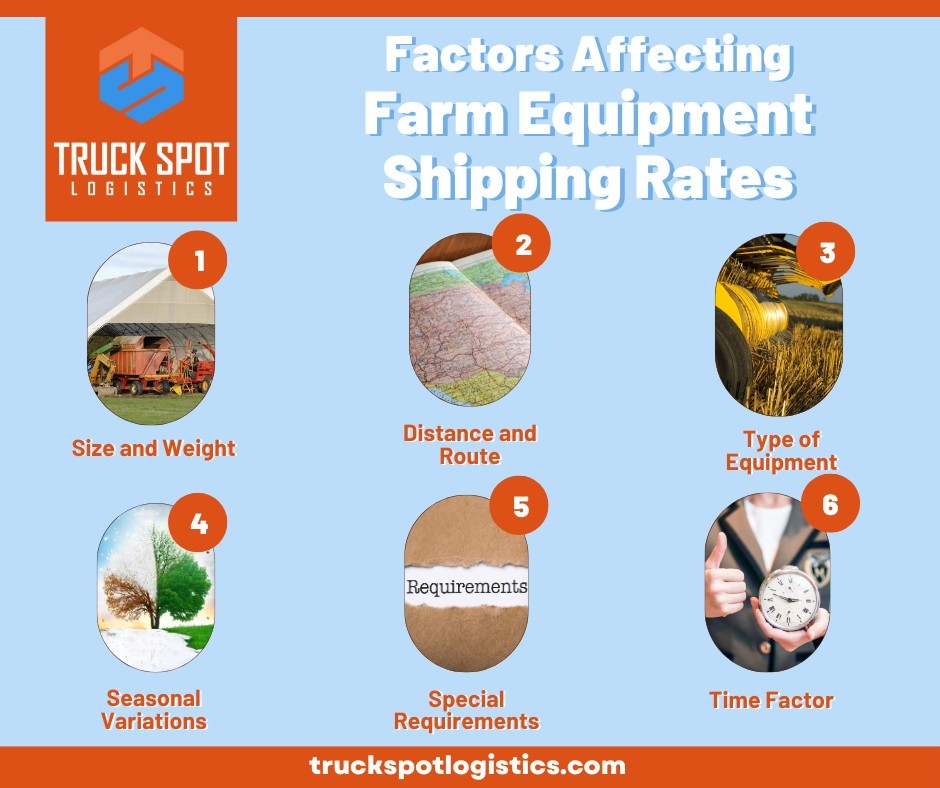
Average Shipping Rates
Understanding the factors that affect farm equipment transportation costs is crucial, but having real-world, concrete examples can truly clarify the picture. Whether you’re a farmer in Iowa shipping a tractor to Tennessee or a dealer in California sending a combine harvester to Arizona, getting a handle on the average costs involved can significantly aid your budgeting process. Below, we’ve collated some examples to give you a sense of the average costs and per-mile rates you might encounter.
| Farm Equipment | Origin (City, ST) | Destination (City, ST) | Average Cost | Cost per Mile |
|---|---|---|---|---|
| Tractor (standard size) | Des Moines, IA | Nashville, TN | $1,800 | $1.75 |
| Combine Harvester | Bakersfield, CA | Phoenix, AZ | $2,500 | $3.20 |
| Baler | Lincoln, NE | Denver, CO | $1,200 | $2.00 |
| Plow | Boise, ID | Portland, OR | $950 | $1.50 |
Whether you’re looking to ship a colossal combine or a petite plow, being informed is key. Once you’ve got a handle on the variables, TruckSpot Logistics can help you compare quotes from reputable farm equipment transport services, ensuring you get the best value for your money.
Challenges in Hauling Farm Equipment and Effective Solutions
Transporting heavy farm machinery across states can present unique challenges. However, with every challenge comes an opportunity for a solution. Let’s delve into some of the most common hurdles faced in farm equipment transportation and the strategies to overcome them.
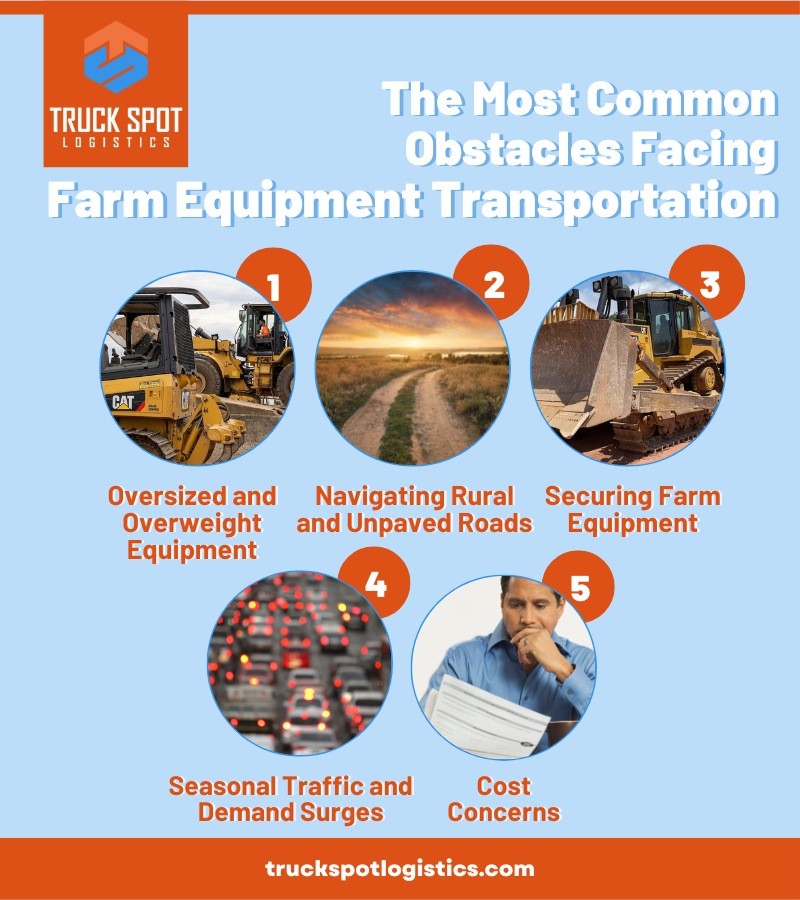
1. Oversized and Overweight Equipment
The sheer size and weight of some farm equipment, like combines or large tractors, often exceed standard legal dimensions and weight limits for highways.
Solution:
2. Navigating Rural and Unpaved Roads
Many farms are located in rural areas with unpaved roads. These roads can pose difficulties for large trucks and trailers, especially during adverse weather conditions.
Solution:
3. Securing Farm Equipment Properly
Improperly secured equipment can shift during transport, leading to damage or safety hazards.
Solution:
4. Seasonal Traffic and Demand Surges
Certain times of the year, especially harvest season, see heightened demand for farm equipment transport. This can lead to longer wait times and increased shipping rates.
Solution:
5. Cost Concerns
Farm equipment shipping rates can be high, especially for cross-country hauls or specialized machinery.
Solution:
While hauling farm equipment comes with its set of challenges, proper preparation, and a bit of insider knowledge can make the journey smooth. Always remember, the right transport partner can make all the difference.
In the vast world of farm equipment transportation, understanding the nuances is key. Whether you’re a farmer in the heartland or a machinery dealer on the coast, getting your equipment safely from point A to B requires knowledge, preparation, and the right partner.
At the end of the day, it’s about safeguarding your investment and ensuring a smooth transition. And remember, when in doubt or looking for the best shipping rates, TruckSpot Logistics is here to guide you every step of the way. Safe hauling, America!
FAQs
What types of trailers are most commonly used for hauling large farm equipment?
Drop-deck, flatbed, and double-drop trailers are among the most commonly used trailers for hauling sizable farm equipment, each suited to specific types of machinery.
Do I need to be present during pickup and delivery of the equipment?
It’s advisable to have someone present—either you or a representative—to ensure the equipment is properly loaded and offloaded and to handle any paperwork.
How do I prepare my farm equipment for transport in winter or rainy seasons?
Weatherproofing is crucial. Ensure moving parts are secured, cover exposed areas, and protect sensitive components. If possible, consider enclosed transport options during harsh weather.
What if my equipment gets damaged during transport?
In the rare case of damage, document it immediately with photos, notify the transport company, and file a claim with the insurance provider.
Are there peak seasons for farm equipment transport that might affect availability or rates?
Yes, harvest seasons or times when agricultural activities are at their peak can influence transport availability and rates.
How can I ensure the transporter I choose is reputable and will handle my equipment properly?
Always check reviews and ratings on trusted platforms like FMCSA, Central Dispatch, and BBB. A carrier with positive reviews is likely to offer quality services that prioritize vehicle safety.





